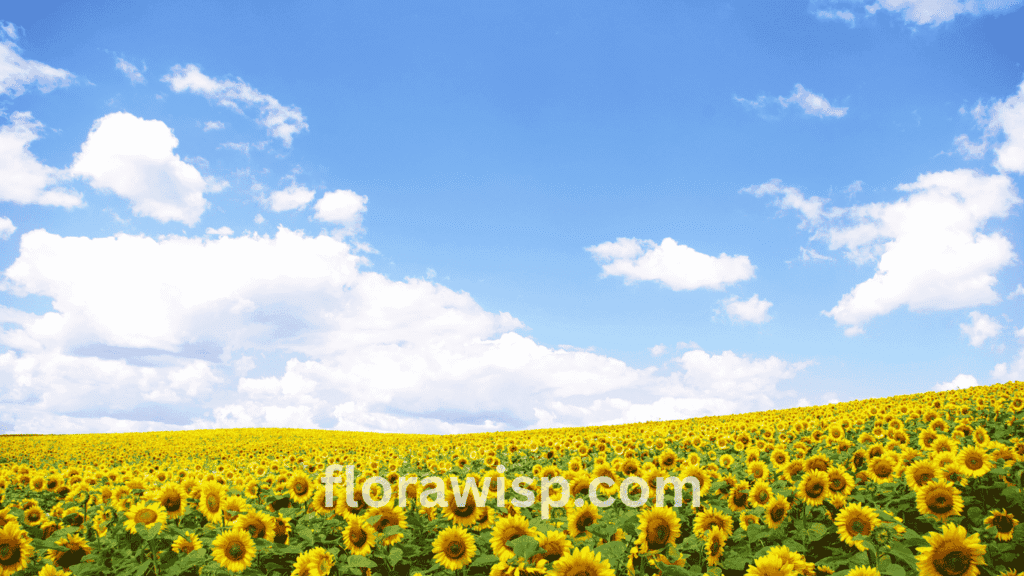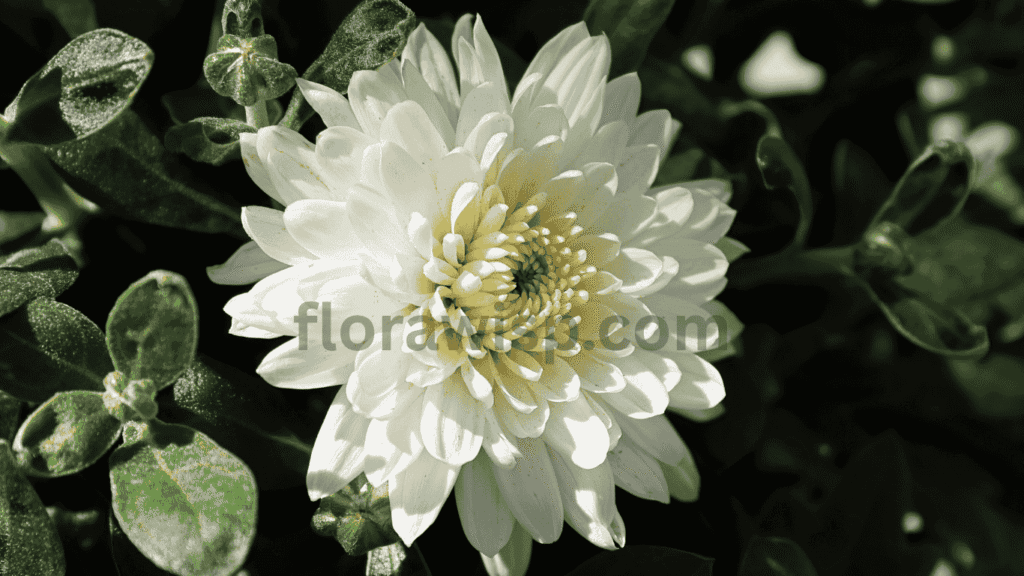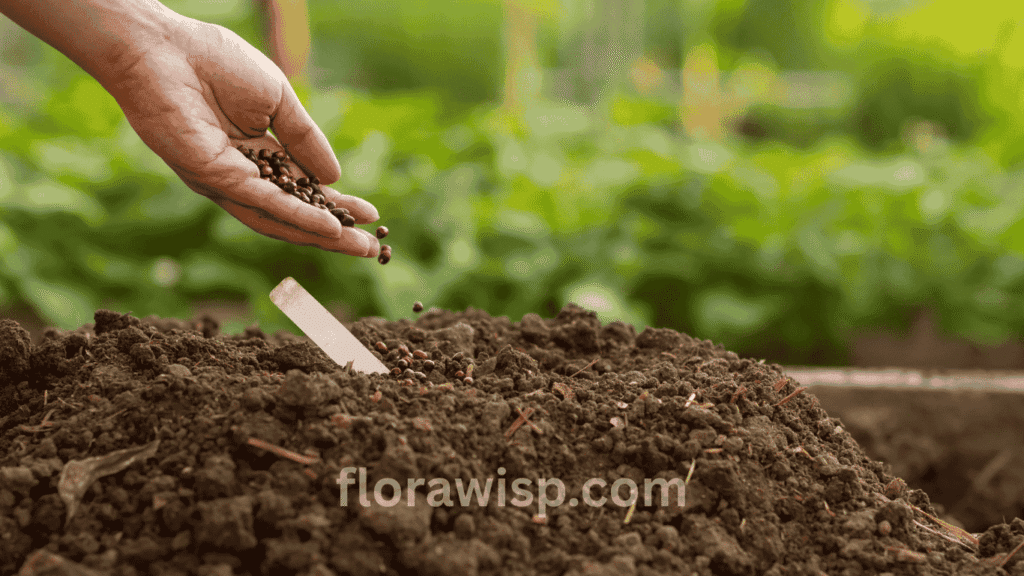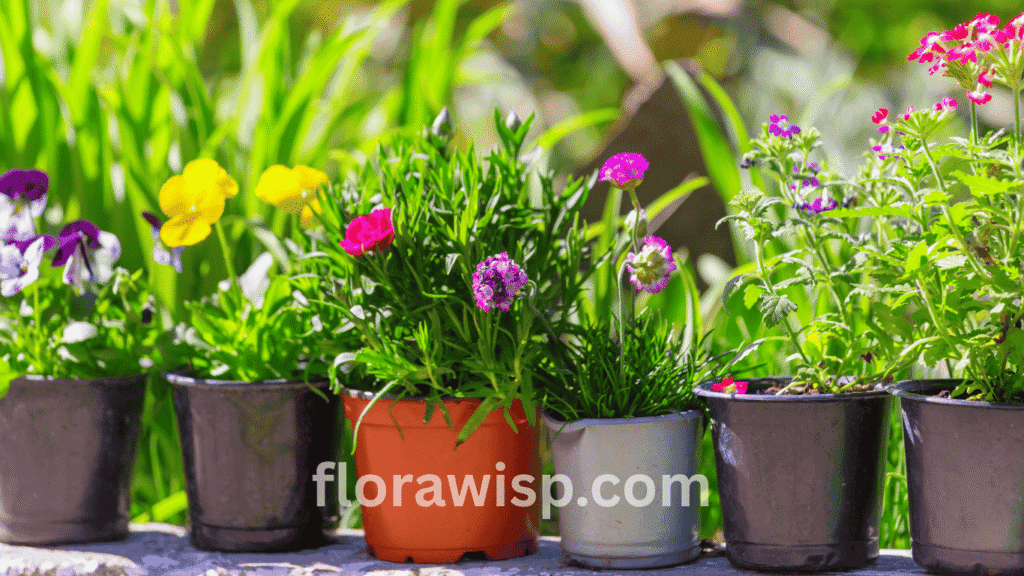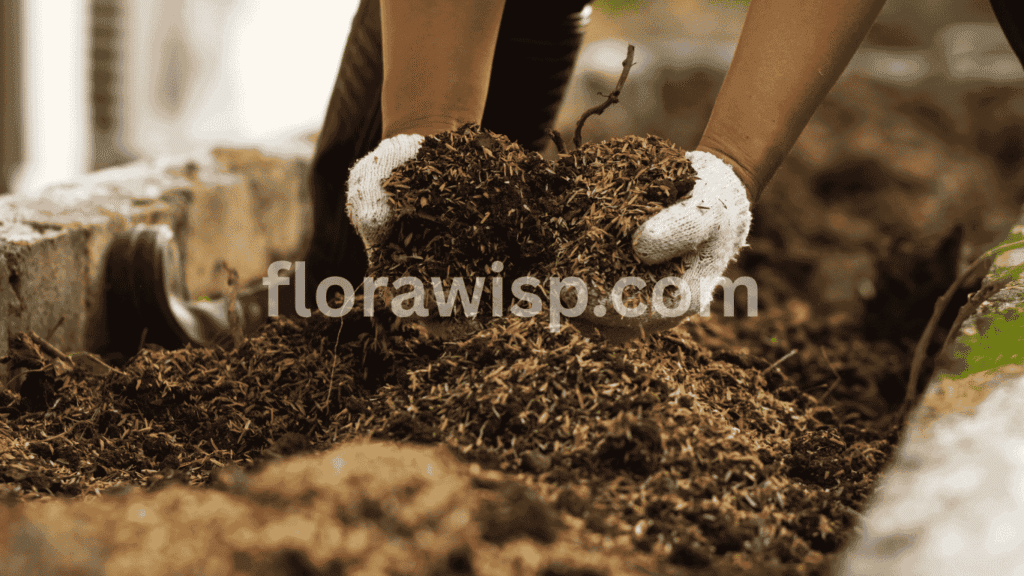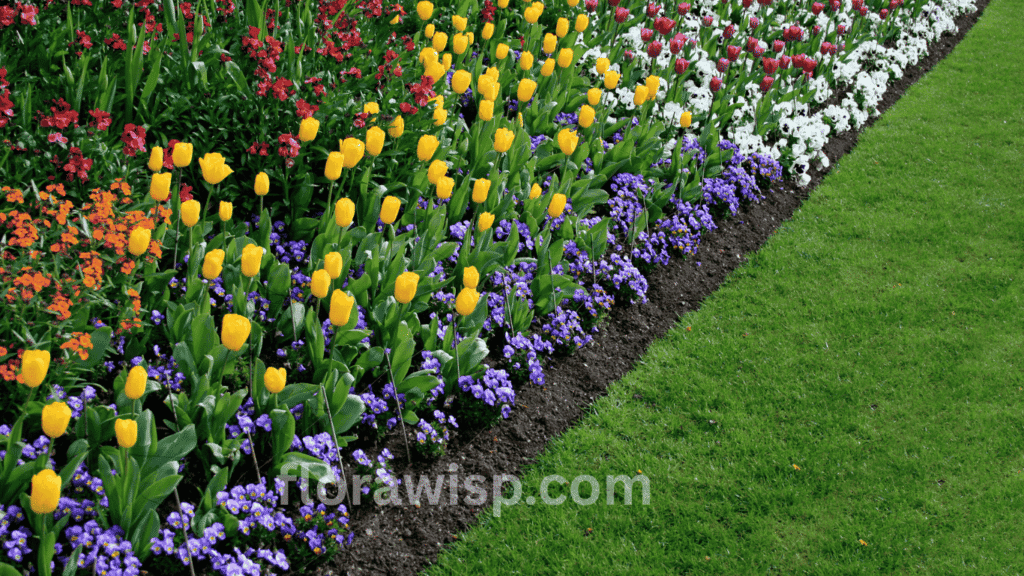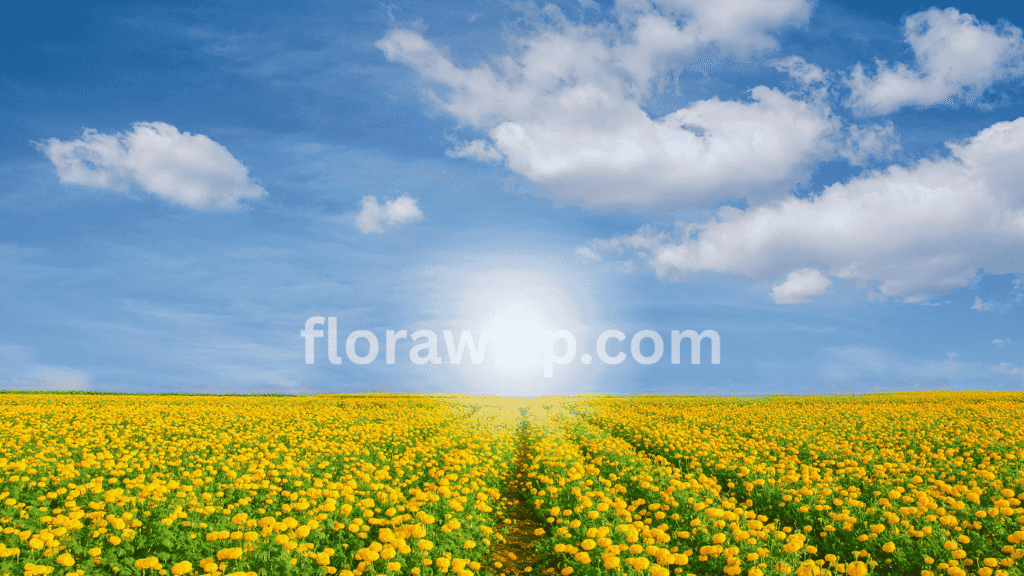Discover the best sunflower seeds for vibrant blooms, tasty harvests, and pollinator-friendly gardens. Find out which types of sunflowers truly thrive and the secrets most guides forget to tell you. When it comes to creating a vibrant, bee-friendly garden, choosing the best sunflower seeds is the key to success.
In This Article
Over the past years, I’ve grown dozens of sunflower varieties tall, dwarf, ornamental, and edible. Some flourished with minimal effort, while others taught me important lessons in timing, spacing, and seed selection. In this guide, I’ll walk you through everything I’ve learned from experience whether you’re planting flowers for food, beauty, or both. From seed selection to planting and harvesting, here’s your complete sunflower success blueprint.
Choosing the Best Sunflower Seeds for Your Garden
Selecting the best sunflower seeds is the foundation of a successful and vibrant garden. With so many sunflower seed brands and options on the market, it’s important to choose wisely based on your gardening goals whether for tall ornamental blooms, pollinator support, edible seeds, or all of the above. Over the years, I’ve trialed a wide variety of seed types, including white sunflowers, dwarf varieties, and more. Each brings its own charm and purpose, and here’s what I’ve learned from hands-on experience.
Top-Rated Sunflower Seed Brands to Consider
Below is a simple comparison of top sunflower seed brands I’ve personally tested, based on seed quality, and whether they’re better suited for snacking or planting. Use this as a quick-reference guide for your garden planning:
| Brand Name | Seed Quality | Best Use | Rating |
| David Sunflower Seeds | Excellent | Snack & Garden | ★★★★★ |
| Burpee Seeds | Premium | Garden Focused | ★★★★☆ |
| Botanical Interests | Organic-Rich | Garden Only | ★★★★☆ |
| True Leaf Market | Sprouting | Garden/Sprouts | ★★★★☆ |
David sunflower seeds are especially popular for their dual-purpose use. While commonly known as a snack, their quality and germination rate make them a surprisingly good choice for beginner gardeners too.
Organic vs. Non-Organic Sunflower Seeds
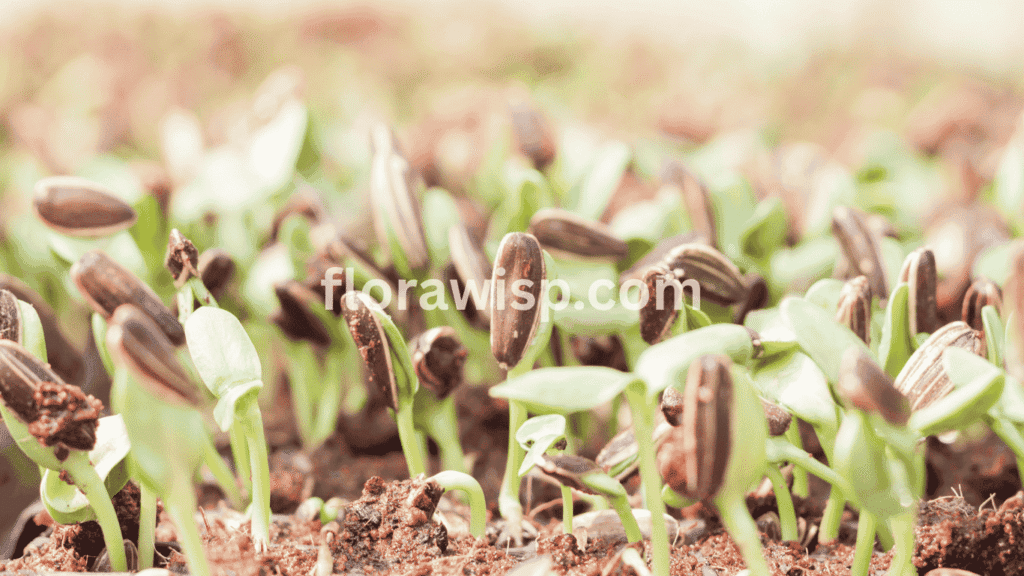
Deciding between organic sunflower seeds and non-organic ones really depends on your gardening priorities. Each option has its own advantages and limitations, so here’s a clear look at the pros and cons of both:
Organic Sunflower Seeds
✓ Grown without synthetic pesticides or fertilizers
✓ Better for pollinators and overall soil health
✓ Safe choice for growing sunflower seeds for sprouting or eating
✗ Generally more expensive than conventional seeds
✗ Limited availability in some local stores and nurseries
Non-Organic Sunflower Seeds
✓ Easier to find in most markets and seed catalogs
✓ More affordable, especially when buying in bulk for large plots
✗ Often treated with chemicals, not ideal for sprouting or edible use
✗ May not support biodiversity and long-term soil quality as effectively
If your goal is a natural, eco-friendly garden, especially one that supports pollinators or yields edible sprouts, organic sunflower seeds are the way to go. On the other hand, if you’re planting across a wide space or working within a budget, carefully chosen non-organic sunflower seed brands can still produce healthy, beautiful blooms.
Buying in Bulk or Small Packs – What’s Best?
I’ve tested both approaches over the seasons. For a 100-foot garden bed last summer, I ordered bulk sunflower seeds for planting from a trusted online farm supplier. Not only did I get a better deal, but I also received a bucket of sunflower seeds that lasted across multiple sowings.
When to go bulk:
- You’re covering large areas
- You’re planting successions through the season
- You need specific varieties not found in local stores
When to go small:
- You’re gardening in containers or raised beds
- You want to experiment with different varieties
- You’re short on storage or only planting once
Today, I still buy in bulk for my main sunflower rows, but I keep a few small packets of unique varieties for border planting and seasonal flair. It’s all about balance—know your space, and buy accordingly.
How to Plant Sunflower Seeds for Healthy Growth
Planting the best sunflower seeds isn’t just about digging a hole and hoping for the best, it’s about understanding timing, soil, spacing, and the environment. When I first tried growing sunflowers from seed, I made nearly every rookie mistake: I planted too deep, overcrowded the rows, and started too early when the soil was still chilly. The result? Stunted sprouts and inconsistent blooming. But those early lessons shaped the gardener I am today.
Let’s break down what truly works especially if you’re starting out and want healthy, towering sunflowers that thrive from seed to bloom. For broader tips beyond sunflowers, check out my guide on How to Plant Flowers from Seeds to start any garden right.
When to Plant Sunflower Seeds for Best Results
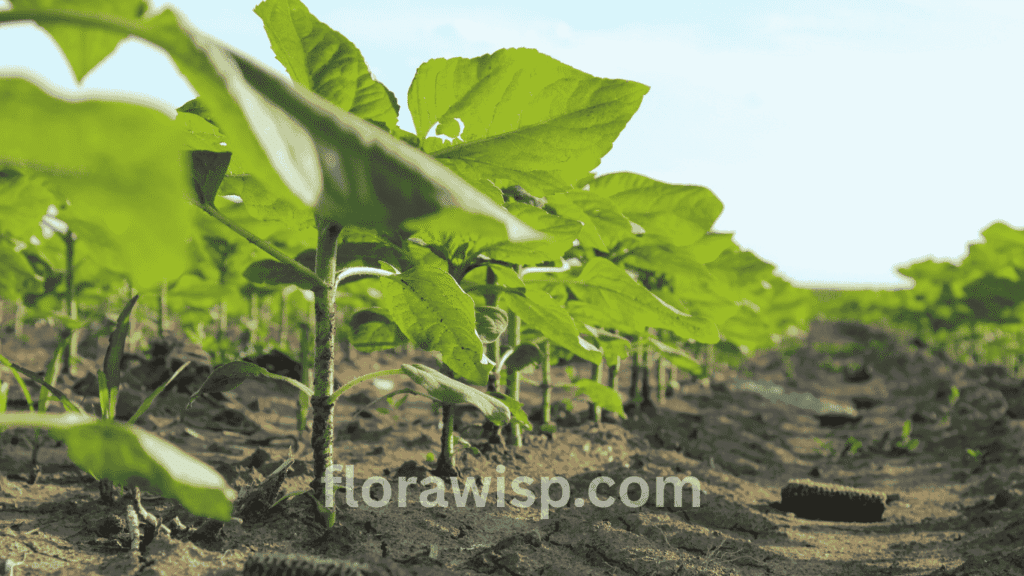
The ideal time for planting sunflower seeds is when the soil temperature holds steady between 55°F and 60°F. This usually falls between mid-April and late May in many U.S. zones. However, the window can shift based on where you live:
- Zone 3–4 (Colder climates): Late May to early June
- Zone 5–7 (Mild): Late April to late May
- Zone 8–10 (Warm): Early to mid-April
Wondering how late can you plant sunflowers? I’ve pushed planting into mid-July using quick-maturing dwarf varieties and still enjoyed a late-summer burst of color. Just know that the later you plant, the more frost risk you face in northern zones. If you’re in Zone 7 like me, a late June planting can still reward you with blooms by early September.
How to Plant Sunflower Seeds Step-by-Step
Here’s a proven beginner-friendly method that’s worked for me season after season:
- Choose the Right Spot: Pick a location that gets 6–8 hours of direct sunlight daily. Sunflowers love heat and light.
- Prepare the Soil: Use loose, well-draining soil. I always mix in compost for extra nutrients.
- Plant the Seeds: Sow sunflower seeds 1–2 inches deep, spaced 6–12 inches apart depending on the variety.
- Water Wisely: Gently water right after planting. Keep the soil moist (not soggy) until germination.
- Thin and Support: Once seedlings emerge, thin them out if needed to avoid overcrowding. For tall types, I use bamboo stakes to prevent wind damage.
- Stagger Your Sowing: For longer bloom windows, plant a new row every 2 weeks until early July.
One tip I rarely see: never plant too early just because the air feels warm soil temperature is the real trigger for strong germination, not air.
Sunflowers from Seed: Indoor & Outdoor Tips
For indoor starts, I’ve had the best success using biodegradable peat pots. They prevent transplant shock since you can plant the whole pot directly into the soil. Make sure the pots sit on a sunny windowsill or under grow lights with temperatures hovering around 70°F–75°F.
Outdoors, direct sowing is usually more reliable, especially if your growing season is long. Once frost is no longer a threat and the soil is warm, it’s go time.
Whether starting indoors or out, keep your planting medium moist, not soaked, and make sure it’s warm. Under the right conditions, your seeded sunflowers will break the surface within 7–10 days.
Whether you’re working with a backyard bed, a balcony container, or an open field, following these tips will help you plant sunflower seeds like a pro. My biggest lesson? Don’t follow every guide you see, trust the soil, trust the sun, and give your seeds space to shine.
Growing & Caring for Your Sunflower Seed Plant
When I first began to grow sunflower seeds, I assumed it would be as simple as dropping them into soil and waiting. But caring for a sunflower seed plant takes more attention than you’d think. I planted too early, ignored soil prep, and underestimated wind damage.
Overwatering during rains led to root rot. These early mistakes showed me that sunflowers, though hardy, still need thoughtful care. Don’t be discouraged once you learn the basics, growing strong, vibrant sunflowers becomes deeply rewarding, whether in containers or a full garden bed. If you’re starting with limited space or want more control, my guide on Growing Sunflowers in Pots walks you through everything from soil prep to daily care.
How to Grow Sunflower Seeds Into Thriving Plants
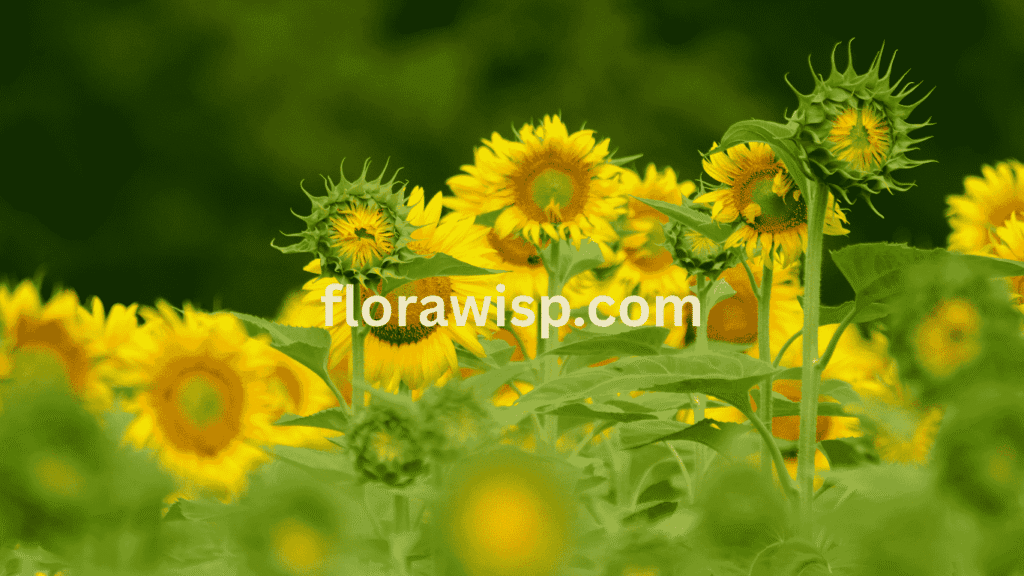
If you want your sunflower seed to turn into a strong, flowering plant, here are the strategies I now swear by most of them learned through trial, error, and seasons of experimentation.
1. Prepare the Soil Like It’s a Bed, Not a Battlefield
Use loose, well-draining soil enriched with compost. I always rake the bed flat to allow even watering and stable root development.
2. Sunlight is Non-Negotiable
A sunflower seed plant needs at least 6–8 hours of direct sun. Choose a spot that’s not shaded by buildings or trees; even partial shade can reduce bloom size.
3. Mind Your Spacing Early On
Avoid the beginner’s mistake of planting seeds too close. For standard varieties, space 12–18 inches apart. If you’re growing giant sunflowers, allow at least 24 inches.
4. Water Strategically, Not Constantly
Water deeply 1–2 times a week instead of daily. The goal is to encourage deep roots, not shallow ones.
5. Stake Tall Varieties Before They Fall
I install bamboo stakes early when the plant reaches about 12 inches. Waiting too long often leads to broken stems after a storm.
6. Choose the Right Seeds for Your Goal
If your aim is large blooms or seed harvest, go for the best sunflower seeds like disease-resistant or drought-tolerant varieties. Brands truly matter when it comes to vigor and uniformity.
Bonus Tip: Add crushed eggshells in the planting hole this helps provide calcium and can deter cutworms early in the season.
Understanding the Sunflower Plant Life Cycle
To grow sunflowers successfully, it’s essential to understand the sunflower plant life cycle and how each stage impacts care. Every sunflower seed plant progresses through six key sunflower plant stages, and knowing what to expect at each phase helps you avoid common mistakes and time your care precisely.
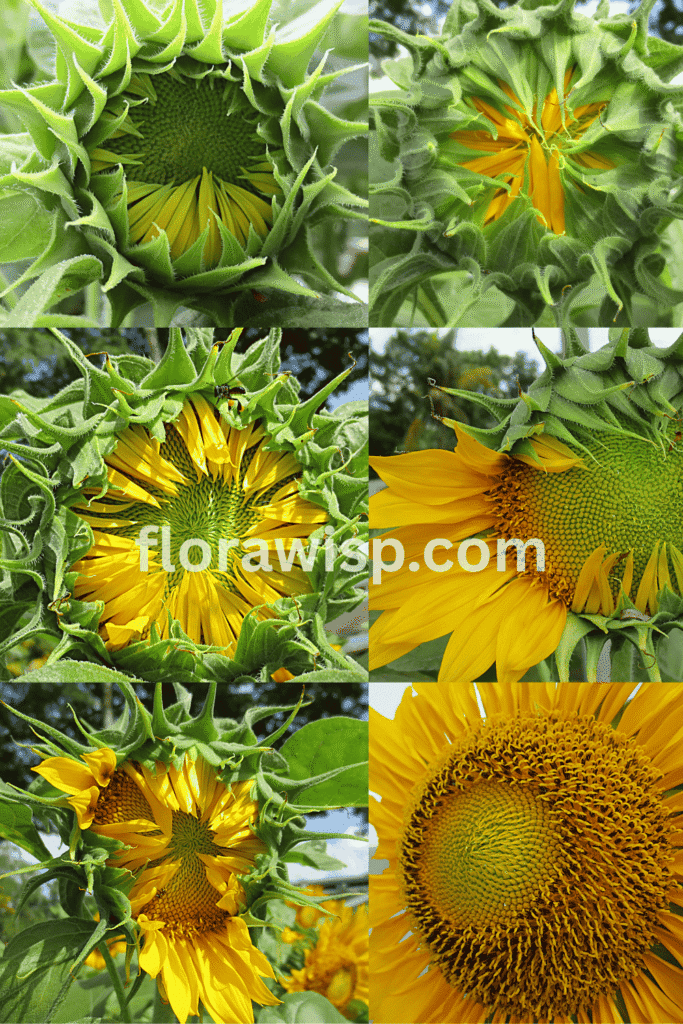
1. Germination (Days 0–7)
Once you sow the seeds, the sunflower seed begins absorbing moisture and warmth. In about 5–7 days, you’ll notice small sprouts breaking through the soil. This stage needs moist but not soggy soil. Too much water and poor drainage are the leading causes of seed rot. I lost nearly 30% of my first batch this way.
2. Seedling Stage (Days 7–20)
The sprout becomes a seedling once it forms its first true leaves. During this stage, overcrowding becomes a risk, so thinning is crucial. Give each plant enough room to grow sturdy and upright. I lightly feed my seedlings with diluted organic fertilizer once a week for a healthy start.
3. Vegetative Growth (Days 20–40)
This is the fastest-growing phase. The stem shoots upward, leaves expand, and the plant starts building strength. Support becomes essential especially for tall or wind-exposed varieties. Pests like aphids and slugs can become an issue here, so check the undersides of leaves frequently.
4. Budding (Days 40–60)
During this stage, the sunflower begins forming buds at the top of the stalk. Depending on the variety, side branches might produce additional blooms. This is when I switch to a phosphorus-rich feed to support flower formation and overall vitality.
5. Flowering (Days 60–80)
Your sunflower is in full bloom now, bright, bold, and attracting pollinators. This is also when watering consistency matters most. If you’re growing the best sunflower seeds, like disease-resistant hybrids, they’ll often hold their blooms longer and resist fungal issues better.
6. Seed Production (Days 80–100+)
The back of the flower head will slowly turn yellow to brown, and the head will droop slightly signaling it’s time to prepare for harvest. This is the moment you’ve waited for: a head full of nutrient-rich seeds. I always allow my heads to dry on the stalk before cutting for maximum seed quality.
Every stage of the sunflower plant growth stage comes with its own joy and challenge. Once you’ve grown a few cycles, you’ll notice how certain seed types, especially the best sunflower seeds, perform more predictably across each stage, making your gardening journey even more rewarding.
Harvesting and Saving Your Sunflower Seeds
How to Harvest Sunflower Seeds Properly
Harvesting sunflower seeds isn’t just about cutting the head and scraping off the seeds timing and technique matter. Once your sunflower’s back turns yellow-brown and the petals have wilted, that’s your sign. The center should be dark and full, and the head will usually droop.
When I first started, I made the mistake of cutting too early. The seeds weren’t fully developed and lacked that signature black-and-white stripe. Now, I wait until the back is papery and dry, then clip the head with a foot of stalk attached and hang it upside-down in a warm, dry space with airflow.
A tip most new gardeners miss? Wear gloves when rubbing the seeds out. Sunflower heads release a sticky resin that stains hands and takes time to scrub off something I learned the hard way.
What to Do With a Mature Sunflower with Seeds
Once dry, the seeds are ready for action. You can roast them for snacking, store them for later planting, or share them with friends and local gardeners.
Personally, I sort my harvest by eating the mid-sized seeds and reserving the plumpest, most symmetrical ones from the strongest sunflower seed plants to replant next season. These are usually from the best sunflower seeds I’ve tested, especially hybrids that deliver consistent height, bloom size, and disease resistance.
Proper storage is key: keep your seeds in paper envelopes inside glass jars in a dark, cool pantry. They’ll easily last until next spring.
Smart Companion Planting with Sunflowers
Best Companion Plants for Sunflowers
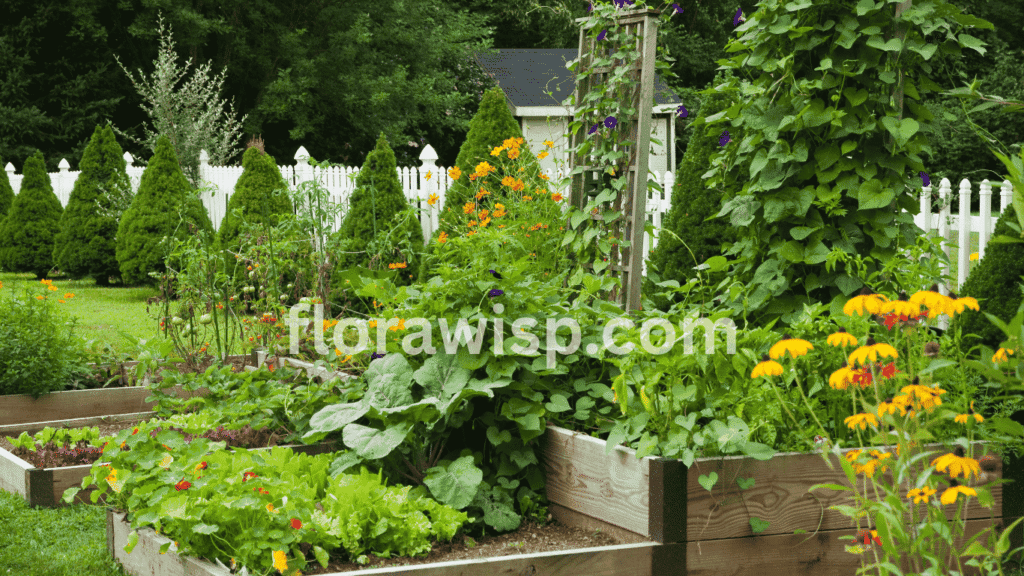
Planting sunflowers isn’t just about aesthetics; they’re powerful allies in a well-designed garden. Thoughtful companion planting with sunflowers creates a balanced ecosystem, helps deter pests, and supports neighboring crops.
I’ve had great success growing cucumbers, squash, and pole beans near my sunflowers. The tall stalks serve as living trellises for vining plants, while their broad leaves provide partial shade during intense summer days. This natural pairing boosts soil health and keeps weeds in check.
What to Plant with Sunflowers
These sunflower companion plants thrive alongside your sunflowers and bring real benefits:
✓ Cucumbers
✓ Squash
✓ Pole beans
✓ Basil & Thyme
✓ Corn
What to Avoid Planting Near Sunflowers
Not every plant plays well with sunflowers. I once planted potatoes and bush beans nearby big mistake. These plants compete heavily for nitrogen and moisture, and my beans struggled all season. Potatoes, in particular, seemed stunted, likely due to the sunflower seed plant’s allelopathic tendencies meaning they release chemicals that inhibit nearby growth.
Avoid planting:
✗Potatoes
✗Bush beans
✗Fennel
These are poor companion plants for sunflowers and may reduce both your sunflower health and the productivity of neighboring crops.
If you’re just getting started, remember: sunflowers make stunning garden companions, but choosing the right plant neighbors can make or break your success. Use your best sunflower seeds wisely, and build your layout with intention. Your garden will thank you.
FAQs
Q. What can I do with a bucket of sunflower seeds after harvest?
Once harvested, a bucket of sunflower seeds can be stored, eaten, or replanted depending on your variety and purpose.
After drying the heads, I rub out the seeds by hand and store the plumpest ones for next season’s planting. The rest go into roasting batches or shared with fellow gardeners. If you’re using the best sunflower seeds, especially hybrids, select only the healthiest, uniform seeds for regrowth they’ll give you stronger plants and more predictable blooms year after year.
Q. When is the best time to plant sunflower seeds for maximum bloom?
The best time to plant sunflower seeds is after the last frost, once soil temperatures stay above 55°F.
For me, late April through mid-May has consistently given the strongest starts. In warmer zones, planting in early April works too. Avoid sowing too early cold soil leads to slow germination and weak sprouts. Staggering your sowings every two weeks until early July can extend bloom time into late summer, especially when using fast-maturing dwarf or branching varieties.
Q. How do I choose the best sunflower seed brands for gardening?
To pick the best sunflower seeds brand, look for high germination rates, disease resistance, and seed purity.
Over the years, I’ve had excellent results with brands like Burpee, Botanical Interests, and David sunflower seeds. David’s seeds may be sold as snacks, but they perform surprisingly well in the garden too. Always check for untreated, non-GMO options if you’re planting for pollinators or edible use. For consistent height, bloom size, and flavor, trusted seed sources truly make a difference.
Q. Can I grow sunflowers successfully from seed without starting indoors?
Yes, sunflowers grow best when directly sown from seed outdoors after frost danger passes.
I’ve tried both indoor starts and direct sowing. Without a doubt, sunflowers perform better when planted straight into warm, well-drained soil under full sun. Direct sowing also eliminates transplant shock. For best results, plant the seeds 1–2 inches deep and space them properly based on variety. The key is to use the best sunflower seeds and avoid overcrowding give them sunlight, compost, and space to thrive.
Q. What are the stages of a sunflower’s life cycle and how do I care for each?
To grow sunflowers from seeds successfully, plant them in full sun, in loose, well-draining soil, and water deeply once a week.
From my own experience, starting with the right seed-to-soil match makes all the difference. I always mix compost into the bed, sow seeds 1–2 inches deep, and space them depending on the variety. The first few weeks are key watch for pests and avoid overwatering. Strong seedlings need breathing room and sun. Once those are in place, sunflowers take off and reward you with unmatched color and structure.
Conclusion
Growing sunflowers is one of the most rewarding gardening experiences. From choosing the best sunflower seeds to harvesting your own homegrown crop, each step offers a new discovery. Over time, I’ve learned that success isn’t just about planting, it’s about observation, timing, and care. Whether you’re growing for beauty, pollinators, or a hearty harvest, the right seed and technique can turn a simple garden into a showstopper. If you’re just getting started, check out my guide on gardening for beginners to build a strong foundation. With this guide, you’re ready to grow smarter, brighter, and better. With this guide, you’re ready to grow smarter, brighter, and better.
References
University of Georgia Extension: Growing Sunflowers in the Home Garden
University of Missouri Extension: Growing Sunflowers
University of Minnesota Extension: Sunflowers
Gardener, M.Sc. Horticulture
Elara Bennet is a gardening writer from Austin, TX, passionate about sustainable lawns and blooms. Read full bio →

